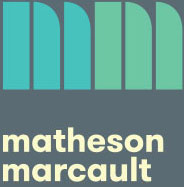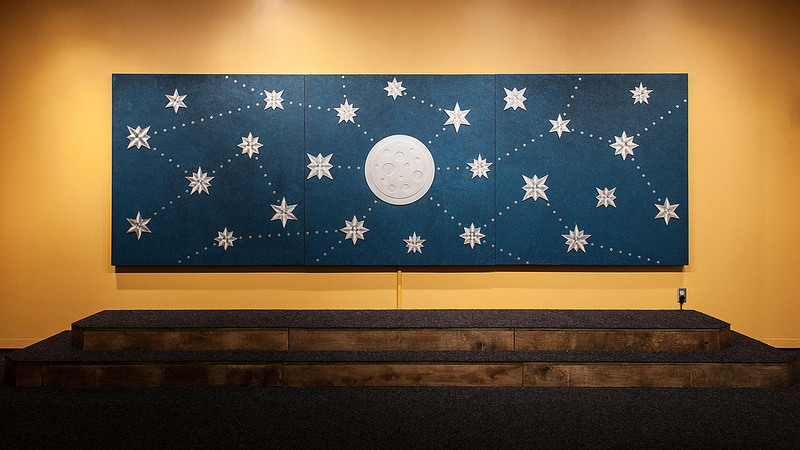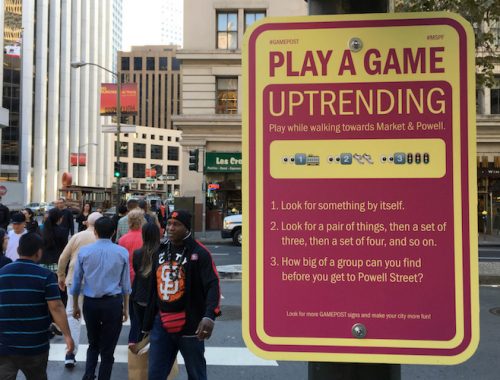As part of our research project for the King’s College London Arts and Humanities Festival, we’ve been interviewing different curators, designers, artists and architects about playful work for public space. Our first interview was with Scott Garner, an artist with a fascinating and wide-ranging practice whose work tends to the interactive and playful – sometimes purely digital, sometimes physical as well.
We started by asking him about his installation Reach, a beautiful stylised sky with moon and stars – where you can make noises by touching the moon and a star at the same time.
US: I was interested in Reach in particular (which seems like such a gorgeous piece). In the documentation online, it doesn’t seem like there’s visible instructions – is that the case? If so I’d love to hear about whether you had to do anything to encourage people to engage with it, how they understand that it’s touchable and what they can do to get it to respond, etc. Is it just the dotted lines, and people work it out from there?
SCOTT: Reach was created for the Children’s Museum of Pittsburgh, an environment where kids generally know they’re allowed to run around and touch everything. Part of the challenge, however, was managing different levels of engagement. I wanted to accommodate both the impatient kids running through the space and banging on everything, as well as more thoughtful children that wanted to puzzle out how something worked in a deeper way. I also wanted Reach to work at different scales—from a single child up to a group of twenty school children.
Reach uses a kind of resistive touch technology instead of the capacitive touch we’re used to with phones and tablets. This means you have to touch two objects to get a response instead of just one, which is unusual. Adults sometimes approach the work and assume it is broken when they touch a single star and don’t get a sound, but children seem to have fewer hang-ups in that area and figure things out after a bit of slapping and touching.
The “secret” of Reach is that you don’t have to touch both a star and the moon by yourself, but can hold hands with someone to bridge longer distances. This form of interaction really shines with a large group of kids using hands, arms, knees, faces, etc., to link together and trigger all of the stars at once. Not everybody figures that out, but word of mouth helps, as does seeing other people engage with it.
US: With your interactive sculptures The Watchmen, it seems a bit clearer to me how interaction is understood – they generate sounds in response to people in their vicinity, so I guess people encounter an audible response to their presence quite quickly? Were there any struggles around the subtlety of this that you encountered? And were there any particular gestures or actions that you found people were really likely to try – or less likely than you thought they would be – when seeking a response from the sculptures?
SCOTT: The two sculptures in The Watchmen function in very different ways. Argus responds to changes in light, so moving around it very clearly changes the sound. Even if you don’t understand that light is the mechanism, it’s easy to get a feel for the kinds of movement that can cause a change. Heimdallr is much more subtle in that it responds to WiFi signals. The presence of human bodies can change the intensity of these signals, so moving around in a space can alter the sound, though in a more mysterious way. Both of the sculptures are fairly fragile, so part of the challenge was making it clear that viewers could move around them, but preferably not touch them. These pieces were shown in a fairly intimate context, though, so it wasn’t a major problem.
US: How do people figure out how they’re “allowed” to engage with a work? What have you found works an indicator that something can be touched or climbed on or generally interacted with?
SCOTT: This can be tricky because there are so many contexts in which we’re allowed to look, but not touch. I think you don’t really have to worry about this with kids, because they will touch and climb on everything whether they’re supposed to or not. The biggest challenge then is making something that both won’t hurt kids or be hurt by them.
With adults, I think you have to give permission in some way, whether in the form of simple signage or by having a staff member present to break the interaction ice. Having someone available to invite people to interact as well as give instruction can make a huge difference.
I think another approach is designing interactives that seem to engage with the user instead of the other way around. If I walk by a wall and notice that it’s moving and changing as I pass, I’ll feel invited to engage with it.
US: Do you need to indicate the limits of acceptable interaction – things that won’t break the piece, or risk hurting the participant – and if so how have you done that?
SCOTT: These limits can be tricky and are ideally defined for a whole environment rather than per piece in an environment. In other words, I think it’s easier to communicate that “this is a place you can touch things” rather than “you can touch this, but not this”.
When designing for children, you want to aim for something more or less indestructible—even then, though, they’ll find a way to break it. Of course, it’s also vital to protect the user. It’s best to start with absolute safety as a core goal from the start, but I’ve spent hours at the end of a project running my fingers over metal pieces looking for sharp edges and filing them down by hand.
One of the things I really liked about working with the Children’s Museum of Pittsburgh is their commitment to using “real stuff”. Exhibits are often fabricated with plywood and visible bolts, which means they’re both durable and communicate to kids that a given fixture is something they can play with.
Beginning a few years ago with projects like Still Life and The Beetbox, I’ve been focused on the idea of “Invisible Technology”. I hide fragile electronic components whenever possible and create interfaces with more traditional, tactile materials. This creates a much more magical experience, and instead of worrying about the durability of cheap, plastic components, I can present big plates of metal and wood.
US: Have you ever used instruction text? Did people read it, if so?
SCOTT: I sometimes use instructional text in screen-based experiences. In general, though, and especially for physical installations, I prefer the idea of “show, don’t tell”. In that case, you might have videos or images of people using the fixture or, ideally, someone present to help if users seem unsure.
I’ve experimented with simple icon-based instructions (think bathroom signage), but if the interaction is somewhat complex, representing it in simple symbols can be even more confusing.
US: Are there differences in engagement levels between adults and children, or any other big demographic differences?
SCOTT: The children/adult divide can be pretty dramatic and in general, children are my favorite audience for a lot of reasons. They are less self-conscious about engaging with something and tend to be driven more by curiosity than by preconceived notions. Kids are the best critics, too. If they don’t like something, you get the message instantly. Adults do their best to be polite about it.
US: Are there particular actions that you find it unusually easy to get people to do?
SCOTT: I think people are much more prone to move and gesture—even dance—if they can see a direct correlation between their own movements and the behavior of an interactive system. In some cases, I think the more abstracted that relationship is, the less self-conscious they will be about moving around. Imagine, for example, that waving your arms around causes fireworks to explode on a screen.
As for specific gestures, people are very comfortable tapping and swiping things from using touch screens and I think it’s possible to adapt similar movements to non-screen based experiences.
US: Is there anything you’ve made where people have engaged with it very differently from what you’d intended?
SCOTT: This almost always happens to some degree, especially if their are kids involved. One approach to designing interactive work is to think in terms of providing systems of interaction instead of expecting very specific behavior. In Volotic and Ostinato, for example, my aim was to provide an open framework for creativity without trying to anticipate every possible way a person might use that framework.
Sometimes, though, the only way to figure out what will work is through play testing. Last year I designed an installation with a subtle musical interaction that required users to press and hold contact points. In testing, though, kids just wanted to run around and slap the contact points, so the subtle layer never emerged. I ended up redesigning the piece to respond to quick touches instead. It wasn’t in line with my original vision, but the result was a more intuitive and satisfying interaction for the user.
If you’re interested in trying out Scott’s work but can’t get to, say, Pittsburgh, take a look at some of his writing and digital stuff.




